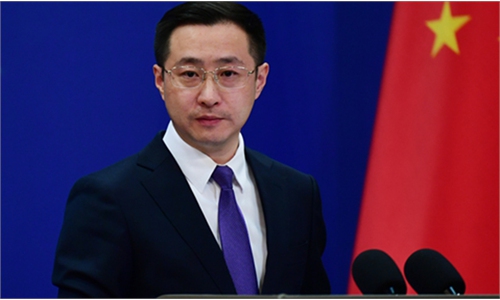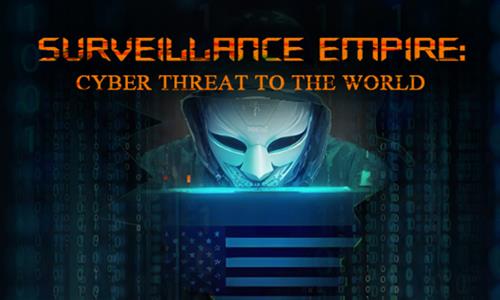Pak military says it 'paralyzed 70% of India's power grid,' further verification needed, but power facilities are vulnerable targets: expert

Photo: VCG
According to Xinhua News Agency, Pakistan's Inter-Services Public Relations (ISPR) issued a statement in the early hours of Saturday, claiming that a cyberattack launched during a military operation against India had paralyzed 70 percent of India's power grid. In response, the Indian Embassy in China stated on its official Sina Weibo account on Saturday morning that "this information is false."
A cybersecurity expert interviewed by the Global Times noted that while the extent of the damage remains to be verified, large-scale paralysis of a national power grid is plausible during armed conflict—especially if a cyberattack causes initial failures that trigger a chain reaction, ultimately resulting in grid collapse and major industrial and social incidents.
The Times of India reported on May 5 that cyber-attacks emanating from Pakistan have further increased, with Pakistani hackers also claiming to have gained access to "sensitive" data from the Indian Military Engineering Services (MES) and other departments. Indian media reports on Saturday noted power outages across several regions. According to The Indian Express, explosions were heard on Friday night near Srinagar Airport, Samba, and other areas, alongside reported blackouts in border regions.
Also on Saturday, The Times of India published a report titled "Blackouts, sirens & Pakistan's failed drone attacks: 10 things that happened in the last 36 hours," stating that night-time blackouts had been implemented in Punjab, Rajasthan, and Gujarat, and that large-scale leave cancellations for medical and security personnel.
Li Baisong, deputy director of the technical committee of Antiy Technology Group, offered a technical interpretation of the claim that "cyberattacks caused a grid collapse." He stated that given the nature of the current conflict, marked by multilateral cognitive warfare, the authenticity and scale of the incident require further verification, including whether Pakistan successfully executed the attack and how far-reaching the effects were.
He further explained that, from a technical and historical perspective, the incident is plausible and likely represents a case where a cyberattack caused one or multiple failures in the power system, which then led to a cascading reaction throughout the grid.
According to the expert, there have been several previous instances of power outages caused by cyberattacks on electrical infrastructure. For example, the 2015 Ukraine blackout was the result of hackers remotely controlling systems to shut down power. Li explained that the power system is an enormous network, and cyberattacks targeting any of its segments—generation, transmission, distribution, or consumption—can result in anything from localized blackouts to full-scale grid separation.
He added that India's weak infrastructure, uneven electricity distribution, poor power sector management, and high transmission losses make its grid particularly vulnerable to cascading failures in the event of a cyberattack.
Public records show that one of the largest power outages in global history occurred in India. Between July 30 to August 1, 2012, the power grids in northern, eastern, and northeastern India collapsed in succession, affecting 20 out of the country's 28 states and covering more than half of the nation's territory.
In military conflicts, cyberattacks have emerged as a new form of threat. The most vulnerable targets are high-value ones, such as power and energy infrastructure, Li introduced.
"In terms of the subjects of cyberattacks, there are civilian actors and state actors. Civilian actors often target the network-exposed assets and services such as website infrastructure. These attacks are typically visible, attract attention, and are relatively easy to defend against, with limited actual impact," Li said.
In comparison, cyberattacks by state actors, such as intelligence agencies or military units, are typically covert and highly targeted. By deploying malware, they can gain control over critical enemy systems, allowing ongoing surveillance and access to infrastructure. After the escalation of the confrontation, they can further cause major production and social incidents such as shutdown of infrastructure, even fires and explosions, according to Li.
Cyberspace has now become a central arena for geopolitical competition between major powers. It has also become a preceding or auxiliary measure in modern warfare, Li emphasised.
"Where there is offense, there must be defense. While attackers control the timing, defenders can seize spatial initiative through systematic deployments and battlefield shaping. It is possible to shift from a passive to an active stance," Li said.
The cybersecurity expert added that national cybersecurity has strategic importance. Countries must build comprehensive multi-layered detection and defense capabilities, covering national security, social governance, institutional safeguards for government and enterprises, and individual user protection. Developing a national cybersecurity mega-project is essential to strengthening strategic defense.
"With such capacity building, internet service providers, government agencies, and enterprises can detect attacks early, mount effective defenses, coordinate responses, and share critical information in real time."



